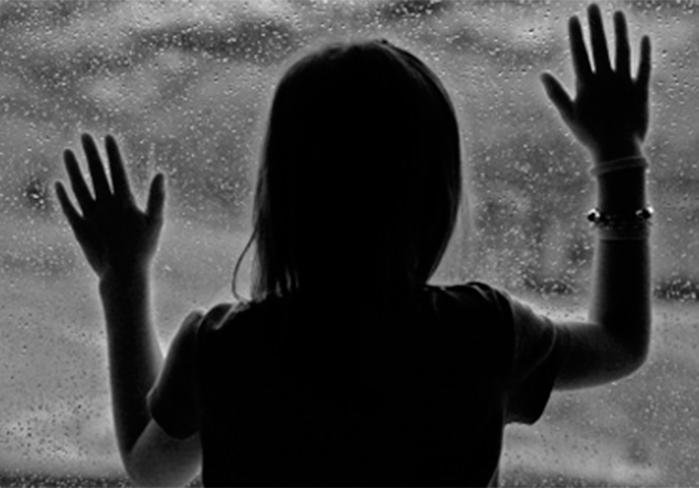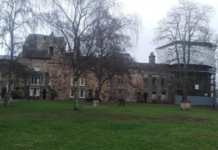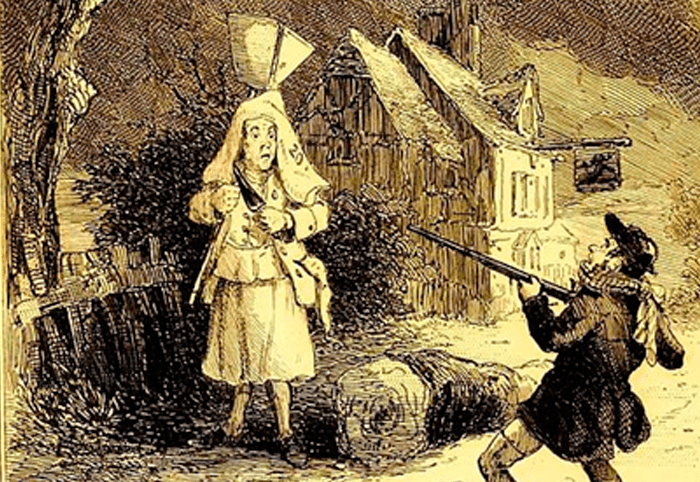THE APPARITION OF ‘UNCLE BERT’ – A CASE SUGGESTIVE OF SURVIVAL
One of the most interesting collections of testimony for modern apparitions published before World War II is Sir Ernest Bennett’s Apparitions and Haunted Houses (1939). Drawing partly on material gathered by the Society for Psychical Research, the collection followed an appeal for first-hand accounts of ghost experiences broadcast on BBC radio in 1934. The appeal received a large number of responses, and after sifting through them, Sir Ernest took steps to seek to obtain corroboration for the most evidential testimony.
A most interesting case was one sent in from Sale, in Manchester, England, by a young woman, Miss Vivienne Lee, who at the age of nine had seen the figure of her favourite Uncle Bert who had died more than a year previously, when she was eight years old. The date of the experience was one morning in about 1917.
She stated “No-one had explained to me why he failed to come to see us each week as usual. I suppose I have always been a pondering sort of person – I used to wonder if he were happy, and think of him often.
“Time passed, and, as is natural at that age – I ceased to worry to the same extent, but often when alone I still questioned where he was etc. I thought only if I could see him just once I would be satisfied.
“One morning – about a year later- I was playing with my dolls – I remember it as though it were yesterday – I was kneeling on the floor; one particular doll was in disgrace and I said “You will have to leave the class now, and go up there” I glanced upwards – towards the window. I remember dropping the doll, and the words burst from my lips: ‘Bunny – Bunny – there is Uncle Bert!‘ (Bunny was our old maid, who was with me at the time.) Clearly outlined against the wall stood my Uncle.
“The figure seemed transparent, Miss Lee stating that she could see the bricks of the wall through the form of her Uncle.
“He had not a body like we have; I remember perfectly every detail, much more clearly than I remember physical events of a much later date.”
“My Uncle seemed as though he had always been there, he looked happy – he held out his arms to me, and smiled – telling me not to worry any more.
“When I say telling me it…. becomes difficult to describe what I mean. He did not speak as we speak – my mind seemed to be in contact with his mind – his lips did not move.”
Miss Lee rushed to the door with the maid to try and go out and touch the figure but by the time she did so, the figure of Uncle Bert was disappearing “he slowly vanished – into thin air.”
“He did not move as we move – he seemed to glide, and the form appeared greyish white.”
Miss Lee stated “I do not understand it, but I know beyond any doubt I saw my Uncle.”
Regarding the incident, Miss Lee stated, “The strange thing is, and it is difficult to explain just what I mean on paper – time, as such seemed to cease. My uncle seemed as though he had always been there, he looked happy – he held out his arms to me, and smiled – telling me not to worry anymore”.
“He did not speak but I clearly understood mentally that he desired me to know that he was well and happy.”
The sighting was corroborated by the maid (‘Bunny’), Mrs M.W. Cooke who stated “On the occasion referred to by Miss Lee, I was standing in the pantry, next to the door of the kitchen, when I heard the little girl cry “Look Bunny! There is Uncle Bert”! I looked up quickly, and saw the figure of a man which I recognised as the child’s uncle, though I did not actually see the face. We ran quickly to the back door, with the intention of greeting the figure as soon as possible; but by the time we had opened the door, the figure was rapidly disappearing. Sir Ernest Bennett stated “The little girl, was it seems, absolutely convinced that the figure which she describes very carefully, was that of her uncle, whose smiling features were unmistakable. The old nurse also claims to have recognised the uncle, though she ‘did not actually see the face’.
The house where this experience occurred was in Cheriton Avenue, Sale, Manchester. Miss Lee provided a sketch of the site and the position of the figure.
From: Case 47 in Apparitions and Haunted Houses (1939) by Sir Ernest Bennett. London. Faber & Faber pp177-180
Alan Murdie comments: In April 2007 I visited the address; it appeared to be a fairly spacious but otherwise ordinary-looking property which seemed to have been divided into two flats. I gained the impression that it might have been vacant at the time I saw it. If it was the original dwelling, there was nothing to suggest anything spooky or ghostly about it. The wall and the passageway still seemed to be there, consistent with the account.
The phenomenology of Miss Lee’s reported experience – examining how the structures of human consciousness process experiences and perceptions of events in the external world – is consistent with many other apparitional encounters in which a person reports a sensation of time standing still or flowing at a different rate.
This suggests an altered state of consciousness on her part, yet it was one shared independently with another witness. Other examples of this may include a sudden sense of silence and everything becoming still. This type of experience is also known in UFO literature (where it has been dubbed ‘the Oz factor’ by British ufologist Jenny Randles) and in some of the more unusual apparitional encounters which are hard to classify. For example, in Haunted Bishop’s Stortford (2015) the author Jenni Kemp describes an unnerving encounter in a country lane one sunny autumnal afternoon. She had been listening to the calls of rooks and other wild birds when ‘Suddenly the noise stopped and all was deathly quiet. Utter silence”. Suddenly from behind her there came a rushing sound and looking round she saw, “what I can only describe as a body of black air – a dark mass – like a shapeless cloak flapping in the wind, speed past me and fly round the corner towards the cottage known as Crows Croft.” Then the sounds of an autumnal afternoon then returned.
As the account told by Miss Lee reveals, witnesses who undergo such experiences may have a strong impression that these experiences are different to ordinary “physical events”. Thus, contained within this account we can see a pattern of experience from a century ago which is consistent with reports still gathered today. Presuming the accounts to be genuine, the apparition of Uncle Bert is different to the majority of apparitions reported in England over the last 150 years in that it appeared to communicate and convey a message (see Appearances of the Dead (1982) by R.C. Finucane); most apparitions seem unaware of the person witnessing them. In its appearance and the manner it moved and disappeared the figure resembled an apparition and Miss Lee believed she was in touch with the consciousness of her deceased Uncle on a psychic level. Occurring more than a year after the death of the person perceived the ghost of ‘Uncle Bert’ does not fall into the category of a crisis apparition.
It might be proposed that the apparition was generated through some unconscious telepathy between Miss Lee and Mrs Cooke, arising in the mind of the Miss Lee as a child and being transferred to the other witness. However, from her own account Miss Lee was not consciously thinking of Uncle Bert or trying to project an image of him; if telepathic the image would have to be created unconsciously. Such a theory – which is also deployed to explain all instances of mediumistic communications as unconscious telepathy between the minds of the living – has been given the label ‘the super-ESP’ hypothesis or ‘super-psi’ hypothesis. However, ‘super-ESP’ has little foundation at present beyond being an idea and suffers both a lack of clarity and boundaries and, more crucially, a lack of evidential support. An appearance such as that described here goes far beyond any instance of telepathy recorded under empirical conditions in a laboratory. The apparition of Uncle Bert is therefore one of a small number of cases of an apparition which is suggestive of survival after death.
APPARITION SUGGESTIVE OF SURVIVAL




